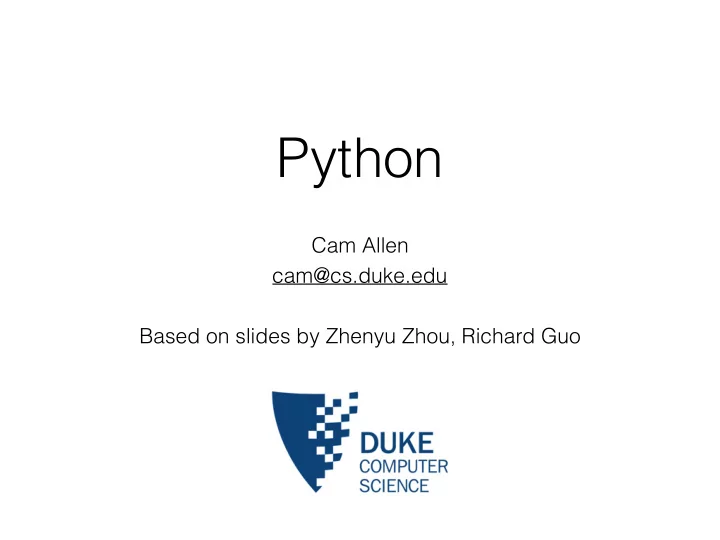

Python Cam Allen cam@cs.duke.edu Based on slides by Zhenyu Zhou, Richard Guo
What is Python?
Language Principles • Beautiful is better than ugly • Explicit is better than implicit • Simple is better than complex • Complex is better than complicated • Readability counts —The Zen of Python
The Interpreter
Running Scripts
Indentation
Indentation Errors
Dynamic Typing
Strings
Lists
Tuples
Sequence Types Type Example String s = "Don’t touch that dial!" List L = [1, 2, 3, 4, 5] Tuple t = ('Check', 1, 2) (more) ...
Sequence Types Operation Result x in s True if an item of s is equal to x , else False x not in s False if an item of s is equal to x , else True s + t Concatenation of s and t s * n, n * s Equivalent to adding s to itself n times s[i] The i th item of s , starting with index 0 s[i:j] Slice of s from i to j s[i:j:k] Slice of s from i to j, with step k len(s) Length of s min(s) Smallest item of s max(s) Largest item of s s.index(x) Index of the first occurrence of x in s s.count(x) Total number of occurrences of x in s
Dictionaries
Quick Recap • Python: popular language, for good reasons • Interactive mode and script mode • Language basics • Next up: control flow, functions, classes, modules
Control Flow Statements
Functions
Default Arguments
Classes
Inheritance
Importing Modules
Summary • Why we’re using Python • How to use Python • Language basics • Building blocks
References • Content is based on slides by Zhenyu Zhou, Richard Guo • python.org - Official Python website • Berkeley Python/UNIX tutorial - Available on course webpage • learnpython.org - Basic tutorials, examples • A Byte of Python - Beginner’s tutorial • Oliver Fromme - Python Information and Examples • tiobe.com - Language popularity index
Recommend
More recommend